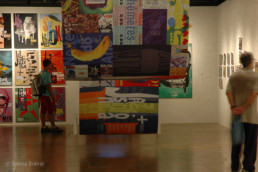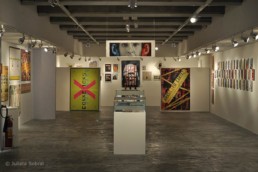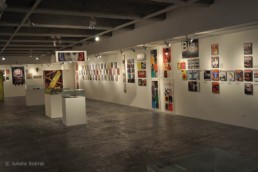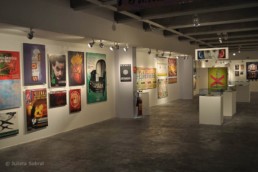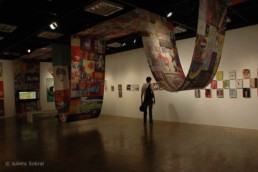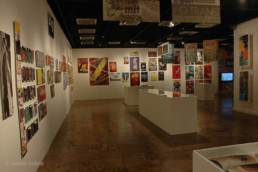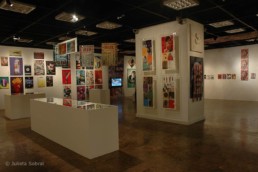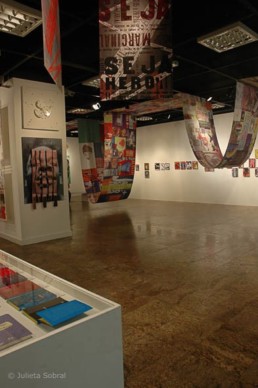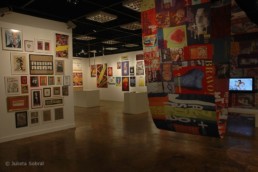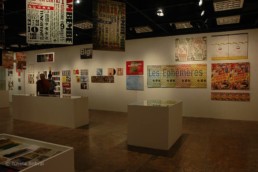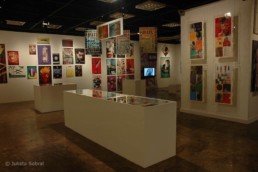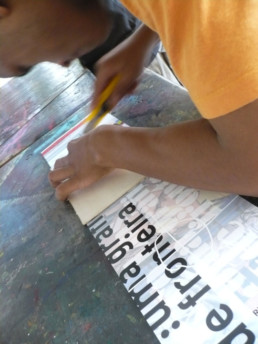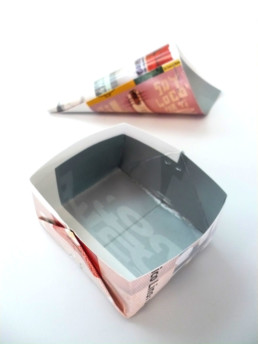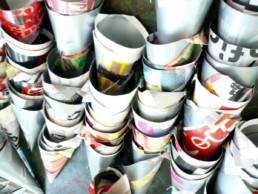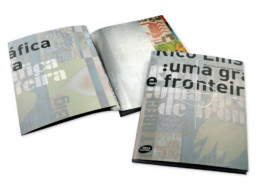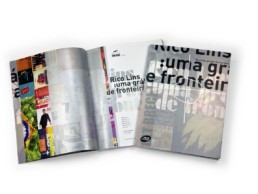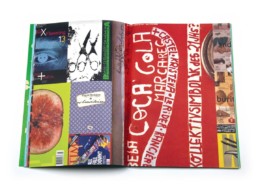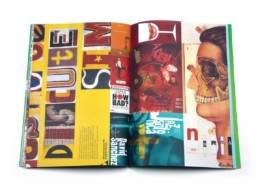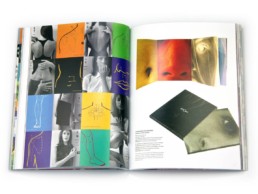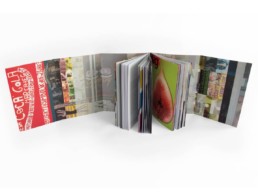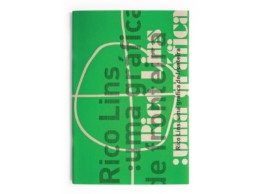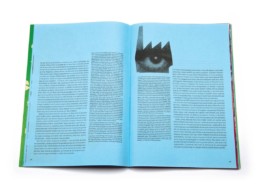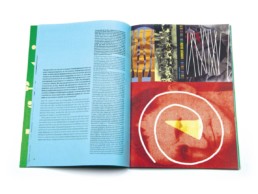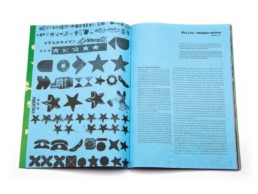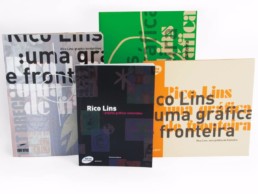Rico Lins: Graphic Borderlines
The project “Rico Lins: Graphic Borderlines” was born from an invitation than the exhibition’s curator, Agnaldo Farias, made me years before the exhibition actually happen, when he directed the MAM of Rio. In his words, the idea was to create “an environment in which I conduct a sort of installation able to translate my world view, something that only a graphic designer is able to have, embodied in words and pictures, papers and projections. “
Created in
Brazil, 2009 – 2011
Category
Exhibition + Editorial
Awards
APCA Award (São Paulo’s Association of Art Critics) for the Graphic Work in 2010 and Jabuti award 2010 for graphic design of the catalog.
It was exciting and challenging because it came with the suggestion to escape the formality of framework on the wall and came to meet some central ideas of my work, including that of proposing a discussion, through the work of the design about the border and the imprecise limits between the graphic and plastic arts. Later, when it finally became real, I brought contributions and responses to the curatorship and Agnaldo`s challenge. The exhibition took place with the sponsorship of Caixa Cultural and opened in Rio de Janeiro in February 2009, starting a itinerancy by other Brazilian cities.
One of these borders materializes scenographically in one of the central elements of the exhibition by bringing a unique feature of industrial graphic arts for the exhibition space by changing the viewer’s relationship to the printed material: a satin fabric banner with 1.5m wide and 45m long with high definition printed projects with it`s proportions altered, where “a stamp takes the size of a poster and the poster of a stamp.”
More than expose projects linearly, using the walls as support for a portfolio, interested me answering the challenges of Agnaldo and propose some form of interaction that take the viewer to reflect about the graphic design and your joints, your chance of acting, its plurality and range. For me the design is a direct result of cultural, technological and market where there is, and tangent numerous creative fields, has a unique ability to engage the viewer. I looked so, in the exhibition design, to put the work to talk to each other and invite the public to this conversation.
The exhibition deals with my way of working, and turns more to the creative process than to the result. Seeking to contextualize my work, not with a process than to the result. Seeking to contextualize my work; it is not a retrospective in the conventional sense: it is a reunion of work I’ve done over my career, where are printed works side-by-side with original, reproductions and video materials. Some older projects may look like the latest and it’s hard for me to establish a chronological trimming, putting in evidence a creative attitude than a style.
Itinerancy
Caixa Cultural Rio de Janeiro (February-March 2009)
Instituto Tomie Ohtake SPaulo (May-July 2009)
Centro Cultural Correios Recife (February-March 2010)
Galeria Vicente Leite / FA7 Fortaleza (April-May 2010)
Caixa Cultural Curitiba (August-October 2010)
Caixa Cultural Brasília (November-December 2011)
Side activities
In all its editions, the project “Graphic Borderlines” included a roundtable discussion about contemporary design identity, guided visits to the exhibition and workshops.
The workshop at Projeto Aprendiz
In São Paulo edition of the exhibition, was held a workshop with Associação Cidade Escola Aprendiz (Apprentice School), whose central idea was to work on the construction of repertoire and cultural identity, from recycling and gluing exercise. There are countless Brazilian popular graphical expressions than are based on the recycling of printed materials (magazines, newspapers, outdoor sheets, directories and others) to print other materials and / or packing fruits, grains and products bought at fairs, bazaars, stages, etc.
The raw material of our work were the remains of graphical proof sheets used for printing the exhibition catalog, and the outcome of the workshop was used in the opening event, emphasizing not only this feature of our graphic design, but also the concept of design as a promoter tool of connections (between people, organizations, communities, knowledge), present in my work. Among other alternatives that we developed were produced countless “cones for packing peanuts” used in the cocktail, graphic object integrator of such diverse content. These ideas find many affinities with the Projeto Aprendiz, coming the idea of involving them in this proposal.
Catalog
Accompanied the Rio edition of the exhibition a catalog of 144 pp / 5 colors with Agnaldo Farias, Adelia Borges, Rafael Cardoso, André Stolarski and Rico Lins`s texts

 Português do Brasil
Português do Brasil